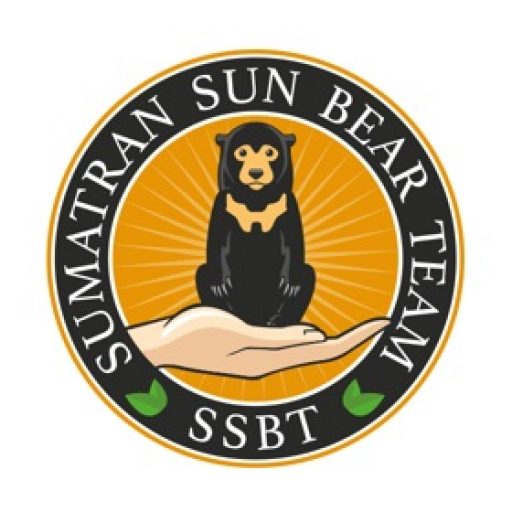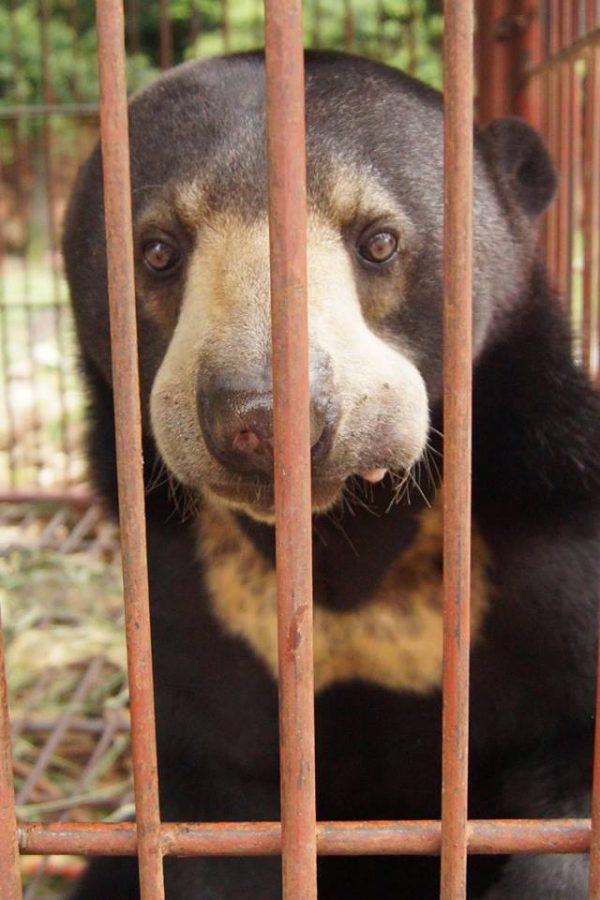The Sun Bear (Helarctos Malayanus) is a bear found in tropical forest habitats of Southeast Asia ranging from northeastern India, Bangladesh, Myanmar, Thailand, Peninsular Malaysia, Laos, Cambodia, Vietnam to southern Yunnan Province in China, and on the islands of Sumatra and Borneo in Indonesia.
About Sun Bears
What’s In A Name?
Many people think that the Sun Bear derived its name from the crest on their chest as it is explained to look like a setting sun. This is not the true reason, however. In 1825 Thomas Horsefield, an American Physician and naturalist who was working in Indonesia, discovered the Sun Bear in Borneo. He compared the Sun Bear in Borneo to the Malayan bear and so named it Helarctos (Bear from hot sun: Equinoctial Bear) Euyspilus (wide birth mark). So the name Helarctos Malayanus Eurospilus, The Sun Bear that is from Borneo translates to Malayan Sun Bear = The bear from the hot sun with a wide birth mark.
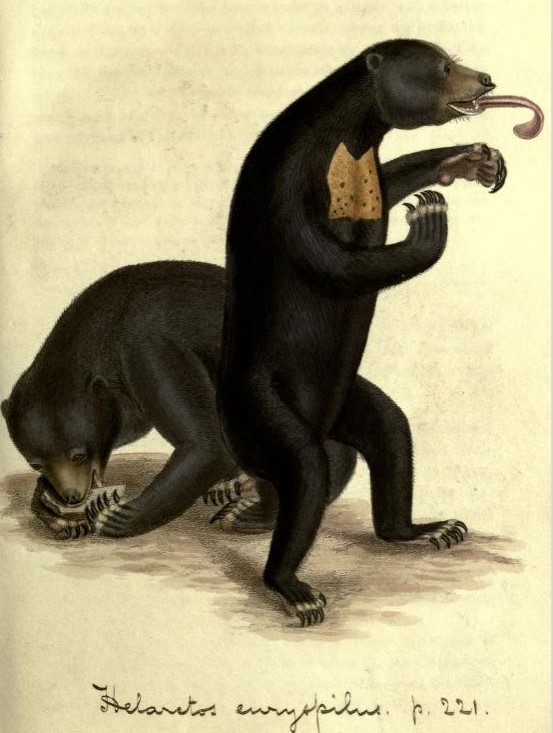
What Do Sun Bears Look Like?
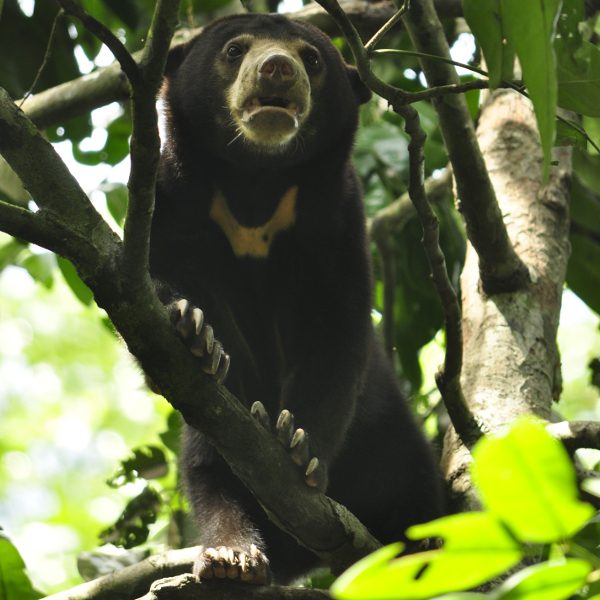
Sun Bears are the worlds smallest bear and the most arboreal. Their fur is usually black, short, and smooth but with some bears may be reddish or grey in shade. A crest on the front of the chest and side of the neck can range in colour from dark ochre to cream. Sun Bears have small, round ears that are broad at the base.
Sun Bears have the longest tongue of any bear species; this helps them to extract insect from nests and honey from hives.
They have powerful forelimbs, with large paws turned inwards and naked soles. This helps them to be fantastic climbers and will often sleep in nests they have made in trees. Their claws are long, curved and very sharp and they have large, broad skulls with powerful jaws and very large canines. These help them to pull apart logs and fruits to eat.
Adult Sun Bears can vary in size. They are around 120–150 cm long and weigh 27–80 kg. Males outweigh females by 15-30%.
Except for females with their offspring, Sun Bears are usually solitary in nature. Sun Bears are primarily awake during the day, but some are active at night for short periods. Bears sleep in a variety of places including fallen hollow trees and tree roots, but will also make nests in trees branches high above the forest floor.
What Do Sun Bears Eat?
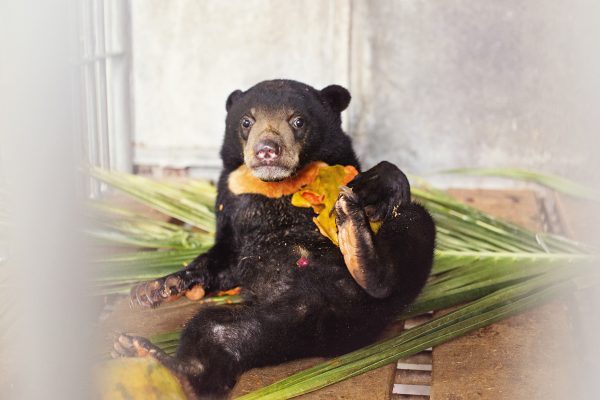
Sun Bears are omnivorous carnivores who use their keen sense of smell to find food. They feed primarily on insects (such as beetles, termites and bees), larvae, and a large variety of fruit species, including figs. They will sometime feed on certain palms and some species of flowers and have been known to eat eggs and small reptiles.
Are Sun Bears Endangered?
Sun Bears are known as very fierce animals when surprised in the forest, but usually run away when humans are near. This makes it a very rare experience to see a Sun Bear in the wild. Most sightings of Sun Bears in the wild are through infra-red camera trap.
Sun Bears are classified as Vulnerable, meaning the species is on a path to becoming extinct in the wild within 30 years/3 generations, if current issues continue to escalate.
The two major threats to Sun Bears are habitat loss and commercial hunting. Commercial poaching of bears for the wildlife trade is a considerable threat in most countries. Killing bears is illegal. Motivations for killing bears include: preventing crop damage, subsistence for hunters, exotic food, bush meat, medicinal beliefs, talismans, fear and misunderstanding of bears near villages, and the capture of cubs for pets (with the mother often being killed in the process).
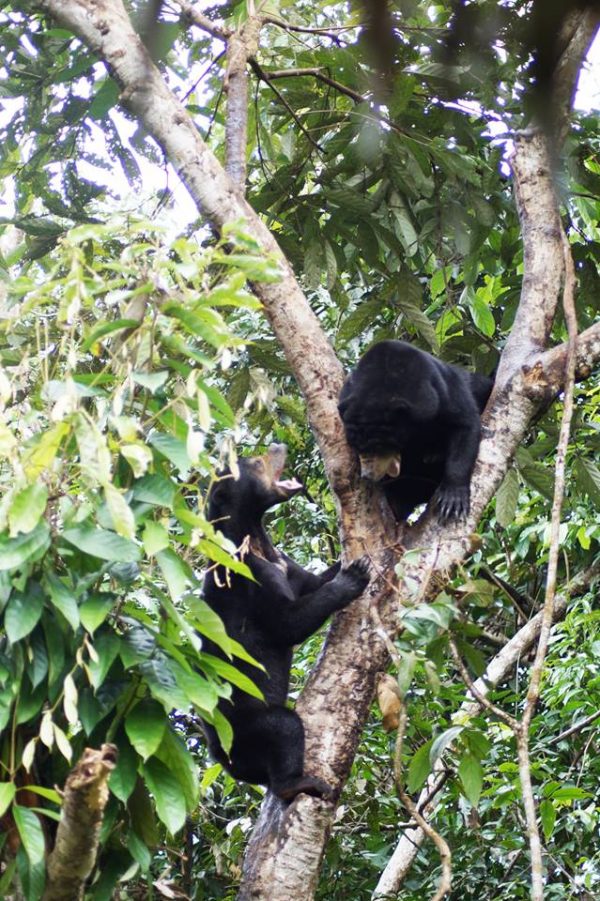
How Can We Help Sun Bears?
The Sumatran Government do have some Sun Bears that have been confiscated from the illegal wildlife trade in their care. However, the facilities are not ideal to adequately meet the specialised needs of the Sun Bear. There is nowhere for Sun Bears to go to for rehabilitation or assessment where specialists can make the decision to release a Sun Bear back into the wild. We would like to offer Sun Bears that have the potential to cope back in the wild the chance to prove their skills in a safe and monitored environment at our centre. The Sun Bears should have a radio tracking collar and we, the equipment to monitor their behaviours once released, to assess if they are coping. We can put strategies in place if a released Sun Bear fails.
Sun Bear cubs spend over two years with their mother learning complex lessons on being a Sun Bear. Since they eat a variety of foods, including 115 different vegetation based foods, a large variety of insects, pupae and larvae, this is a very extensive process. Cubs learn to stay away from adult male bears, where and how to make nests to sleep in and how to survive in harsh conditions. Released Sun Bears, especially those who have not had this valuable training, can fall victim to a territorial male Sun Bears.
Even with pre-forest evaluation, years of human care, forest walks and radio collar monitoring post-release there is an extremely high failure rate. There are experts working on rehabilitation and release methods for released bears to have the best possible outcomes and this should still be encouraged.
It is for this reason that attempts to release confiscated and rescued Sun Bears that do not have sound forest skills or without the correct procedures and experience will most certainly cause death to the Sun Bears, and therefore a safe rescue and conservation centre is needed for Sun bears in Sumatra.
Adult Sun bears that are taken from the forest, or rescued from snares may be perfect candidates to be released.
We hope that wild Sun Bears will always be able to survive in the wild. We want to see healthy forests and healthy ecosystems. For the Sun Bears who, through no fault of their own are not in the forest and need help. We will be there for them and other species if required.
